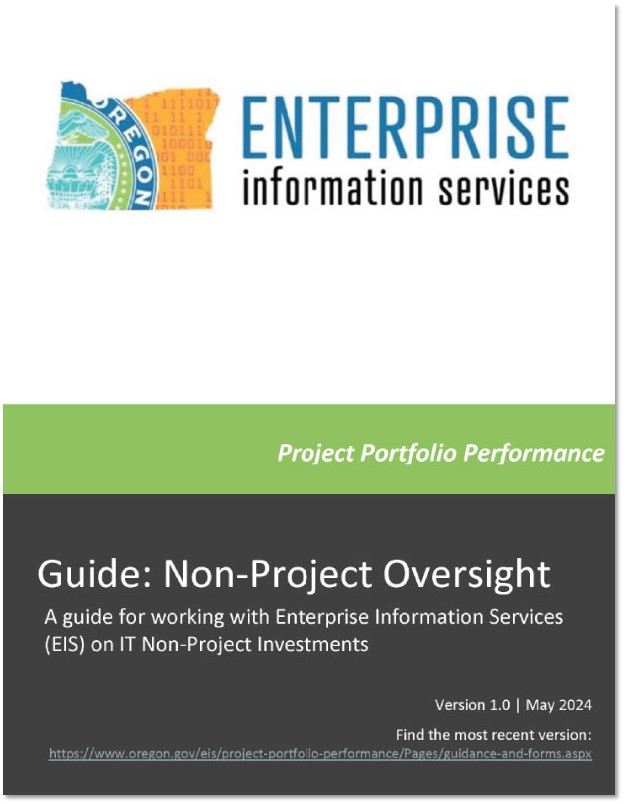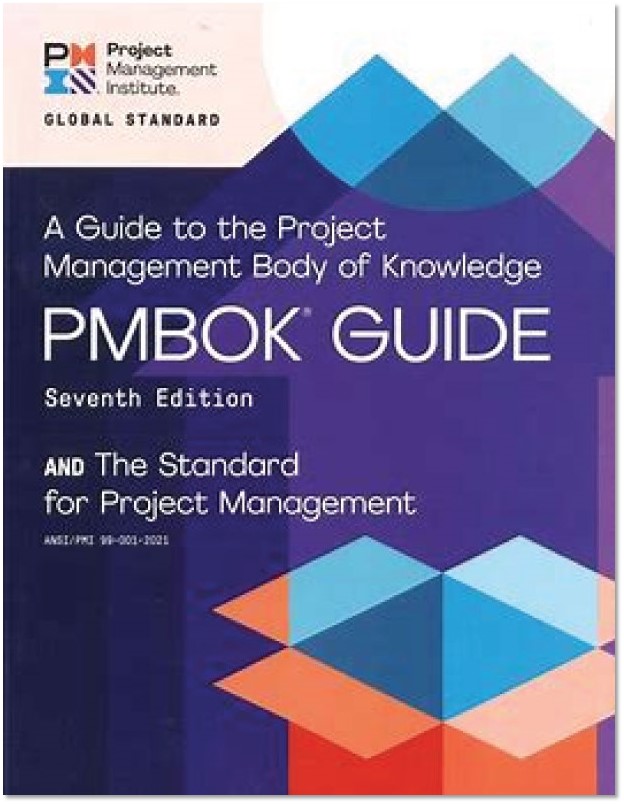Project Oversight
Project means “a temporary endeavor undertaken to create a unique product, service, or result” (PMBOK Guide). Typically, projects have project managers assigned, are approved by agency governance and are officially chartered.
For Project investments, authorization via endorsement is required prior to procurement release or contract signature.
In 2014, Enterprise Information Services (EIS), in cooperation with the Legislative Fiscal Office (LFO), established the
Joint EIS/LFO Stage Gate process—an incremental funding and project oversight model for major IT initiatives that meet EIS oversight thresholds or are determined to pose a substantial investment risk.
Stage Gate Oversight Stages
Work activity to prepare for Stage Gate 1 endorsement corresponds to a project’s origination and initiation, where the organization identifies project management and business analysis resources (contracted or internal) and prepares high-level project justifications and project initiation documents.
To initiate EIS/P3 review, an
IT Investment form must be submitted. Upon approval, EIS/P3 will provide a Stage Gate 1 endorsement memorandum (which may contain conditions that must be satisfied before the next endorsement).
Work activity to prepare for Stage Gate 2 endorsement corresponds to a project’s resource and solution analysis planning. Stage 2 ends when EIS/P3 provides a Stage Gate 2 endorsement memorandum (which may contain conditions that must be satisfied before the next endorsement).
This Stage is expected to be completed before the agency begins a formal Request for Proposals (RFP) process to procure the project's Solution Contractor (also known as the System Integrator, Implementation Contractor, Design-Development-Implementation (DDI) Contractor, etc.).
Independent Quality Control review of important foundational planning artifacts may need to occur prior to Stage Gate 2 endorsement.
Work activity to prepare for Stage Gate 3 endorsement corresponds to a project's detailed implementation planning. Upon approval, EIS/P3 will provide a Stage Gate 3 endorsement memorandum (which may contain conditions that must be satisfied before the next endorsement). At the time of Stage Gate 3 endorsement the scope, schedule, and budget baselines are set for the project.
During implementation planning:
- The project develops substantial details about the specific implementation approach that will be used to execute the project.
- The project usually releases an RFP for requisite solution vendor services.
- The project's planning documents are revised to establish scope, schedule, and budget baselines.
- The detailed project management plan is updated as appropriate vendor services are procured and as needed, throughout the remainder of the project lifecycle.
With EIS concurrence, agencies may execute a contract for the Solution Contractor prior to Stage Gate 3 endorsement to assist in detailed project planning. However, agencies and their contractors may not begin project execution work before receiving Stage Gate 3 endorsement from EIS/P3.
From the perspective of a project's authorized budget, Stage Gate 3 endorsement may be needed to support the release of funding for project execution.
Depending on an agency's agile maturity, agile or hybrid projects may receive incremental Stage Gate 3A endorsement to proceed with initial delivery and then subsequent Stage Gate 3B endorsement to complete the remainder of the project.
Upon obtaining its Stage Gate 3A endorsement, an agency initiative may proceed with initial delivery (approximately eight sprints or four months) and then submit for Stage Gate 3B endorsement to continue execution activities. The agency will be required to demonstrate or provide evidence of completion and acceptance of initial delivery.
Work activity to prepare for Stage Gate 4 endorsement corresponds to a project's execution, where the organization implements the plans that were developed in Stages 1, 2, and 3, delivers the functionality described in the project documents and vendor Statement(s) of Work, and prepares project tracking and close-out artifacts.
For agile projects obtaining Stage Gate 3A endorsement, projects may proceed with initial delivery (approximately eight sprints or four months) and then submit for Stage Gate 3B endorsement to continue work through the remainder of the project.
During execution, EIS/P3 expects:
- Projects to submit monthly status reports to EIS/P3.
- Any significant change to scope or change to schedule or budget baseline of +- 10% requires submission of updated project artifacts and re-endorsement from EIS/P3.
- An appropriate and documented level of internal quality assurance activity by the agency project team.
- If independent quality management services (IQMS) are engaged, IQMS deliverables will be shared with the people identified in statute (ORS 276A.223(5)(a)) and uploaded into the PPM tool after acceptance. The scope of reviews must include items identified under 107-004-030 in the General Requirement section, #8.
At project close, EIS/P3 will provide a Stage Gate 4 endorsement memorandum (which may contain additional conditions that must be satisfied). Stage 4 endorsement will rely on appropriate transition and operations/maintenance planning, lessons-learned and close-out documentation.
Previous Stage Gate oversight model prior to June 2020
If your project began oversight prior to June 2020, contact your P3 Oversight Analyst for specific details of the Stage Gate oversight process for your project.
Non-Project Oversight
 Non-Project is an IT investment which may include purchases, subscriptions, contracts, contract amendments, contract renewals, etc. Some project-like activities such as development of an implementation or communication plan may be required; it is expected that these activities represent a minority of Non-Project investment work. Typically, this work encompasses fewer than 80 hours of staff time or a similar threshold established through agency governance.
Non-Project is an IT investment which may include purchases, subscriptions, contracts, contract amendments, contract renewals, etc. Some project-like activities such as development of an implementation or communication plan may be required; it is expected that these activities represent a minority of Non-Project investment work. Typically, this work encompasses fewer than 80 hours of staff time or a similar threshold established through agency governance.
For Non-Project investments, authorization via endorsement is required prior to purchase, subscription, or contract signature.
Program Oversight
 Program is defined as “a group of related projects, subsidiary programs, and program activities managed in a coordinated manner to obtain benefits not available from managing them individually” (PMBOK Guide). Programs may include any number of project and non-project investments. Typically, individual program investments will share a program-level Business Case.
Program is defined as “a group of related projects, subsidiary programs, and program activities managed in a coordinated manner to obtain benefits not available from managing them individually” (PMBOK Guide). Programs may include any number of project and non-project investments. Typically, individual program investments will share a program-level Business Case.
All agency programs where multiple investments are expected to meet oversight thresholds must follow this general process. Via the
Project Portfolio Management (PPM) tool, agencies should submit an
ITI, Program Business Case, and Program Charter.
A Senior IT Portfolio Manager (SIPM) will review these artifacts for alignment to enterprise and agency strategy and will authorize the program as part of a policy group portfolio (an EIS recognized program). Updates to program artifacts may be necessary through the life cycle of the program. For instance, the Program Business Case and Charter may be expanded to include justification and details for component investments required for program success. Updated artifacts must be approved by EIS. IT Investments which relate to a Program must be individually submitted for oversight as appropriate, however in many cases the need for additional investment justification (e.g., a Business Case) may not be needed.